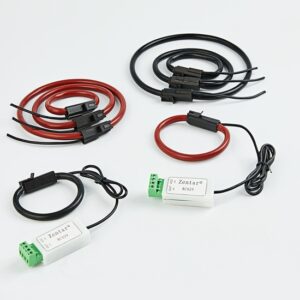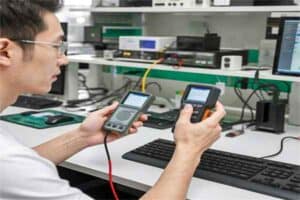Type B current transformer Application area
In recent years, the use of Type B RCDs has increased due to their ability to provide comprehensive protection against all types of residual fault currents. Type B RCDs are widely used in many industries, including electric vehicle charging, photovoltaic systems (solar panels), mining, tunnels, shipping and any installation where there is a risk of direct current flow. This technology comes closest to providing full protection against all known residual fault currents.
Type B RCDs are used where DC residual currents may occur, such as three-phase rectified power supplies, and also in micro-generators or SSEGs (small generators), such as solar panels and wind generators. At the same time, IEC 62109-1 specifies the requirements for inverters used in photovoltaic systems and clearly states that only Type B RCDs can be used in such systems, as Type A or AC RCDs cannot provide adequate protection.
The Type B RCD provides protection against DC residual currents and AC residual currents up to 1000Hz.
(Type B RCDs can also be used in UPS system, check this article to learn more)
Types of Type B Current Transformers
There are several different types of Type B current transformers available in the market, each with its own unique set of features and benefits. Some of the most common types include:
Split-Core Current Transformers – These transformers are designed to be installed around an existing cable without the need to disconnect it from the system.
Clamp-On Current Transformers – These transformers are designed to be clamped onto an existing cable and are ideal for retrofit applications.
Solid-Core Current Transformers – These transformers are designed to be installed around a cable during the initial installation of the charging system.
Choosing the right type of current transformer will depend on several factors, including the size of the cable, the location of the charging system, and the specific requirements of the application.
Market potential in China
For the special B-type on-board residual current protection module for charging piles, many domestic and foreign companies have designed this area, and according to the information released by the National Energy Administration, my country’s charging infrastructure has developed rapidly and built the world’s largest number and distribution. Wide charging infrastructure network.
1, The scale of charging infrastructure is rapidly expanding. In 2022, China’s charging infrastructure will continue to grow at a fast pace, effectively supporting the rapid development of new energy vehicles. The annual growth of charging infrastructure reached about 2.6 million units, and the cumulative number reached about 5.2 million units, an increase of nearly 100% over the same period last year.
2, Charging and switching operation market has achieved rapid development. China’s charging market presents a diversified development trend, the current various types of charging pile operating enterprises have more than 3000, of which the number of public piles more than 10000 units of enterprises have 17, the head of the enterprise aggregation effect is obvious.
3, technology and standard system gradually mature. The National Energy Administration has set up a technical committee for the standardization of electric vehicle charging equipment in the energy industry, established a charging infrastructure standard system with China’s independent intellectual property rights, and issued a total of 31 national standards and 26 industry standards. China’s DC charging standards are on par with Europe, the United States and Japan.
4, the government monitoring service platform system to speed up construction. The country has built 29 provincial-level charging equipment monitoring service (supervision) platforms (except Tibet and Qinghai) to support industry management, subsidy distribution and planning in various regions. The National Energy Administration is promoting the planning and construction of national-level platforms in an orderly manner.
However, although the development of charging infrastructure has achieved remarkable results, there are still some problems, such as unreasonable layout of public charging facilities, difficulty in building piles in some residential areas, non-standard operation of the charging market, inadequate maintenance of facilities and so on.
However, China’s National Energy Administration, together with relevant departments, will continue to strengthen the top-level planning and policy coordination for the development of the charging infrastructure industry, continuously optimize the planning and layout of the charging network, and strive to solve the charging problems related to people’s vital interests. optimize and improve the government regulatory platform system, improve the development quality and construction and operation standards of the charging industry, serve the development of the new energy vehicle industry, and meet people’s needs for clean and low-carbon travel.
The rapid development of China’s EV charging infrastructure provides opportunities and motivation for enterprises to explore the EV charging market and the new energy market. Enterprises can seize the opportunity and give full play to their own strengths and advantages, so as to tap the market potential and promote the development of enterprises; at the same time, for the further development of new energy and low-carbon technology, take appropriate responsibility and contribute to the strength of enterprises.





